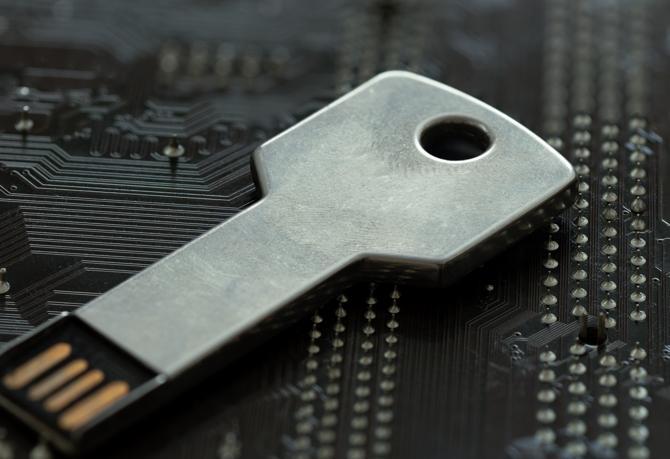
Many users believe their hardware wallets offer unparalleled security for their cryptocurrencies, but they are not invulnerable. Criminals employ dusting attacks to trace wallet addresses by sending minuscule amounts of cryptocurrency, known as “dust.” This process allows attackers to link multiple wallets and uncover the identities of wallet holders. Understanding how dusting works and recognizing its threats is vital in securing your digital assets and maintaining anonymity.
Understanding Hardware Wallets
What is a Hardware Wallet?
For anyone delving into the world of cryptocurrency, a hardware wallet serves as a secure device designed to store private keys offline. Unlike software wallets that are susceptible to online threats, hardware wallets are immune to malware and other cyber attacks since they don’t have an internet connection. This makes them a highly desirable option for those looking to protect their digital assets from hacking attempts.
Importance of Hardware Wallets in Cryptocurrency
On a fundamental level, the importance of hardware wallets in cryptocurrency lies in their ability to provide enhanced security and control over digital funds. Users can manage their assets without relying on third-party services, reducing the risks associated with online trading platforms. By keeping private keys in a physical device, investors can ensure that even if their computer or smartphone is compromised, their valuable cryptocurrencies remain safe.
To further appreciate their role, hardware wallets not only offer security but also ease of use for everyday transactions. They often feature user-friendly interfaces that allow users to sign transactions securely without exposing their private keys. For instance, when using a hardware wallet, the device processes transactions internally, which limits exposure to potential phishing attacks or keyloggers, thereby significantly reducing the chance of losing assets. Their robust design and ongoing updates also help address emerging threats in the digital landscape.
What are Dusting Attacks?
While cryptocurrencies offer a high degree of anonymity, dusting attacks exploit this feature to de-anonymize users. These attacks involve sending tiny amounts of cryptocurrency, or “dust,” to various wallets to track transactions and identify wallet owners. This seemingly innocuous tactic effectively enables attackers to piece together the transactional history and relationships of individuals.
Definition of Dusting Attacks
Among the many methods employed by cybercriminals, dusting attacks stand out due to their subtlety. Unlike direct hacks or phishing attempts, dusting entails distributing minuscule amounts of cryptocurrency, making it difficult for wallet holders to detect the threat. This technique is often used to trace and analyze user behavior within the blockchain ecosystem.
The Mechanics of Dusting Attacks
Across the cryptocurrency landscape, dusting attacks utilize a strategic approach to compromise user privacy. Attackers send small amounts of cryptocurrency to a large number of wallets, and once the recipients unknowingly spend this dust, they create a transaction that can be traced back to their original wallet. This information can potentially link wallet addresses to identifiable entities, revealing more about the individual’s financial activities.
For instance, as users attempt to consolidate their dust into significant transactions, attackers can monitor and analyze these movements. By connecting multiple wallets through transaction history, these criminals gain insight into spending habits, which could potentially lead to further exploitation. This tracking can assist malicious actors in crafting targeted phishing attempts or scams, emphasizing the need for heightened awareness among cryptocurrency users.
How Criminals Execute Dusting Attacks
You may be surprised to learn that criminals employ a variety of sophisticated techniques to execute dusting attacks on crypto wallets. These tactics allow them to send tiny amounts of cryptocurrency, or “dust,” to target wallets, enabling them to track the movement of funds and link various wallet addresses to an individual. Once criminals gather enough data, they can potentially identify the user and compromise the security of their hardware wallets.
Techniques Employed by Criminals
One of the primary techniques used in dusting attacks is the mass sending of small transactions to a wide array of addresses linked to a target. This method creates a network of connections that investigators can exploit to trace the ownership of wallets. Additionally, attackers often utilize mixing services to obscure the origin of funds, making it challenging for the victim to identify their attacker. By analyzing patterns in the spending and receiving of funds, criminals can easily peel back the layers of anonymity.
Case Studies of Notable Attacks
Studies have documented various dusting attacks that illustrate the risks associated with such tactics in the cryptocurrency world.
- In 2019, a wave of dusting attacks targeted over 100,000 wallets, with attackers successfully linking 70% of them to their owners.
- In early 2020, an estimated $1 million worth of dust was sent out, affecting thousands of users before exchanges implemented countermeasures.
- A 2021 case involved criminals sending dust to 500 wallets belonging to high-profile individuals, resulting in verified tracking of multiple funds across the blockchain.
And the implications of these dusting attacks are profound. A significant number of victims reported feeling violated as their privacy was compromised, leading to heightened concerns about the security of their crypto assets. In some instances, individuals lost control of their wallets after unknowingly interacting with the dust, underscoring the importance of remaining vigilant against such attacks.
Identifying Dusting Attacks
Now, detecting a dusting attack involves recognizing unusual activities in your wallet transactions. Committed cybercriminals typically send small amounts of cryptocurrency to a variety of addresses linked to the target, hoping to track the movement of funds and gather identifying information. If you notice small, unsolicited amounts appearing in your wallet, it’s a strong indicator that a dusting attack may be underway.
With privacy at risk, it becomes vital to be vigilant about any unexpected transactions. Additionally, heightened patterns of unique addresses interacting with your wallet can signify an orchestrated attempt to unmask your identity. These signs signal the need for immediate action to protect your assets.
Signs Indicating a Dusting Attack
An array of unsolicited transactions to your hardware wallet is a fundamental sign of a dusting attack. These small amounts could seem innocuous, but they often represent the initial steps of an attacker attempting to analyze and associate your wallet address with a real-world identity. Coupled with suspicious transfers to a multitude of addresses, these patterns create a pathway for attackers to trace your spending habits and behavioral patterns.
Another warning sign is the increased scrutiny of your wallet’s outgoing transaction behaviors. If you observe an unusual spike in network activity or notice small amounts being sent to multiple new addresses, it’s a strong indication that your privacy is being compromised. These indicators emphasize the need for proactive monitoring of your cryptocurrency transactions.
Tools for Detection
Against the backdrop of evolving threats, awareness and the use of specialized tools can significantly enhance your ability to detect dusting attacks. An array of software solutions exists that can help identify suspicious activity linked to your wallet. These tools often analyze transaction histories, flagging irregular patterns and highlighting potential exposure to dusting techniques.
Due to the complexity and frequency of dusting attacks, leveraging state-of-the-art tools becomes imperative for cryptocurrency users. Advanced analytics features enable these tools to track transaction flows comprehensively, allowing users to identify potential dusting cases early. Implementing such solutions not only safeguards your assets but also equips you with the means to stay ahead of potential threats, ensuring greater protection for your digital identity.
Prevention Strategies
Best Practices for Securing Your Wallet
Your hardware wallet security starts with ensuring that it is kept in a safe location, away from potential physical threats. Always use a strong, unique password for your wallet, and enable two-factor authentication whenever possible. Avoid connecting your wallet to public or unsecured networks, as this increases the risk of exposure to malicious actors.
The integrity of your wallet can be maximized by regularly updating its firmware and software. This helps protect against vulnerabilities that criminals might exploit. Additionally, consider using a secure backup method, such as writing down your recovery phrase and storing it in a safe place, separate from your wallet.
Monitoring and Responding to Threats
Your vigilance plays a significant role in protecting your hardware wallet. Continuously monitor your accounts for any suspicious activity and be alert to unusual behaviors that might indicate a potential attack. Implement alerts for any transactions or changes to your wallet, as this will allow for rapid response in the event of an intrusion.
It is crucial to act quickly if you detect any signs of a security breach. Immediately disconnect your wallet from any devices and change your passwords to limit further access. Following this, conduct a thorough review of your wallet’s security measures and assess any additional precautions needed. Regular communication with your wallet provider can also provide insight into emerging threats and recommended actions.
Legal and Ethical Considerations
To understand the implications of dusting attacks, it is vital to evaluate both the legal frameworks and ethical norms in cryptocurrency security. The rapidly evolving landscape of digital currencies has led to significant ambiguity regarding laws governing privacy, consent, and cybercrime. Regulatory agencies in various jurisdictions are still catching up to the nuances of blockchain technology and the methods used by criminals. While some may argue for stronger legal protections for individuals, others worry that excessive regulation could stifle innovation in this decentralized ecosystem.
Legal Implications of Dusting Attacks
Against the backdrop of existing laws, dusting attacks pose unique challenges for enforcement and prosecution. While malicious tracking of hardware wallets may fall under various computer crimes statutes, proving intent and direct harm can be complex. Law enforcement agencies may struggle to gather evidence that adequately links the attackers to tangible damages, resulting in fewer convictions and limited deterrence. This creates a perception of impunity among criminals who exploit vulnerabilities in the cryptocurrency domain.
Ethical Concerns in Cryptocurrency Security
Legal debates also intertwine with ethical concerns, raising questions about the responsibilities of those who create and manage cryptocurrency systems. Legal frameworks may not fully address the ethical implications of user privacy and consent regarding tracking transactions. It is argued that developers have an ethical obligation to incorporate measures that protect users from dusting attacks and other security threats.
For instance, enhancing user education about the risk of dusting attacks could empower individuals to take proactive steps to secure their assets. By fostering a community awareness of potential threats, developers and users alike contribute to a safer cryptocurrency environment and emphasize the importance of ethical practices in emerging technologies.
Summing up
Conclusively, dusting attacks pose a significant threat to hardware wallet users by enabling criminals to track and analyze blockchain transactions. These attacks exploit the inherent transparency of digital currencies, allowing adversaries to link small transactions to larger wallets and subsequently unveil the identities of their holders. Users must be aware of the risks and adopt strategies to safeguard their privacy and security.
Moreover, preventive measures such as using various wallets, employing mixing services, and staying informed about emerging threats can help mitigate the impact of dusting attacks. As cryptocurrency adoption grows, vigilance in protecting personal assets and information becomes increasingly important. Ensuring that one’s digital footprint remains obscured from potential attackers is vital in the quest for financial security in this evolving landscape.







